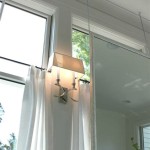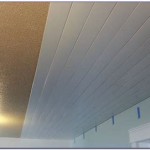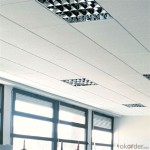Choosing the Right Paint Roller for Popcorn Ceilings
Popcorn ceilings, also known as acoustic ceilings, were a popular choice in residential construction for many years due to their sound-dampening and texture-hiding properties. However, these ceilings often present challenges when it comes to painting. The textured surface requires careful consideration when selecting the appropriate tools, particularly the paint roller. The wrong roller can lead to uneven coverage, damage to the texture, and a generally unsatisfactory finish. This article provides a comprehensive guide to selecting the best paint roller for popcorn ceilings, ensuring a professional and aesthetically pleasing result.
Because of the porous nature and delicate structure of most popcorn ceilings, standard painting techniques and tools often fall short. Simply applying paint with any roller can cause the texture to crumble, flatten, or become saturated unevenly. The goal is to achieve full coverage without compromising the integrity of the existing texture. Therefore, understanding the different types of rollers, their nap lengths, and suitable materials is crucial for a successful painting project.
Furthermore, preparation of the ceiling surface is paramount. This involves cleaning the ceiling to remove dust and debris, repairing any damaged areas, and potentially applying a primer specifically designed for textured surfaces. Proper preparation, combined with the correct paint roller, will significantly improve the final painted appearance and prolong the lifespan of the paint job.
Understanding Nap Length
The nap length of a paint roller refers to the thickness of the fibers extending from the roller's core. This measurement is crucial when selecting a roller for a textured surface like a popcorn ceiling. Longer nap lengths are generally better suited for textured surfaces because they can reach into the crevices and irregularities, ensuring more complete coverage.
For popcorn ceilings, a nap length of at least ¾ inch is typically recommended. However, depending on the depth and density of the texture, a 1-inch or even a 1 ¼-inch nap may be necessary. The goal is to choose a nap length that is long enough to adequately coat the texture without being so long that it causes excessive paint buildup or matting of the texture.
Shorter nap rollers, such as those with a ¼-inch or ⅜-inch nap, are designed for smooth surfaces and will not effectively reach into the texture of a popcorn ceiling. Using a short nap roller on a popcorn ceiling will result in uneven coverage, requiring multiple coats and potentially damaging the texture.
When selecting a nap length, it is beneficial to consider the overall condition of the ceiling. If the ceiling is old and the texture is particularly fragile, a longer nap may be preferable to minimize the pressure applied to the surface during painting. Conversely, if the texture is relatively robust and well-adhered, a slightly shorter nap within the recommended range may suffice.
Roller Material Considerations
In addition to nap length, the material of the roller cover is another important factor to consider. Various materials are available, each with its own strengths and weaknesses in terms of paint absorption, release, and durability. The most common roller cover materials are synthetic blends, natural fibers, and foam.
Synthetic blend rollers, typically made from a combination of polyester and nylon, are a popular choice for painting popcorn ceilings. These rollers offer good paint absorption and release, are relatively durable, and are compatible with both latex and oil-based paints. They are also resistant to matting and shedding, which is particularly important when working with delicate textures.
Natural fiber rollers, such as those made from lamb's wool or mohair, are known for their excellent paint absorption and smooth finish. However, they tend to be more expensive than synthetic blends and may not be as durable. They are also more prone to shedding, which can leave fibers embedded in the texture of the ceiling. While they can provide a high-quality finish, natural fiber rollers may not be the most practical choice for popcorn ceilings due to their cost and shedding potential.
Foam rollers are generally not recommended for popcorn ceilings. While they can provide a very smooth finish on flat surfaces, they lack the ability to effectively reach into the crevices of a textured surface. They also tend to create air bubbles in the paint, which can result in an uneven and unprofessional-looking finish.
When selecting a roller material, it is also important to consider the type of paint being used. Latex paints are water-based and generally compatible with most roller materials. Oil-based paints, on the other hand, require rollers that are specifically designed for use with solvents. Using the wrong roller material with an oil-based paint can cause the roller to break down and deteriorate.
Techniques for Painting Popcorn Ceilings with a Roller
Even with the correct roller, proper painting techniques are essential for achieving a successful outcome. Applying too much pressure or using the wrong motion can damage the texture and result in an uneven finish.
Before beginning, prime the ceiling using a primer formulated for textured surfaces. This will help the paint adhere properly and prevent the popcorn texture from absorbing too much paint. Allow the primer to dry completely according to the manufacturer's instructions.
Load the roller with paint, ensuring that it is evenly distributed throughout the nap. Avoid overloading the roller, as this can lead to drips and runs. A paint tray with a built-in grid is helpful for achieving a consistent paint load.
Use light, even strokes when applying the paint to the ceiling. Avoid pressing too hard on the roller, as this can flatten the texture. Work in small sections, overlapping each stroke slightly to ensure complete coverage. The goal is to gently coat the texture without saturating it.
Consider using a specialized popcorn ceiling roller. These rollers are designed with larger gaps and a more open weave in the nap, allowing them to hold more paint and more effectively reach into the texture. They also tend to be more durable than standard rollers, which is important when working with abrasive surfaces.
After applying the first coat of paint, allow it to dry completely before applying a second coat. This will ensure that the texture is fully coated and that the final finish is uniform. If necessary, apply a third coat to achieve the desired level of coverage.
Clean the roller thoroughly after each use to prolong its lifespan. Remove excess paint by rolling it onto a clean surface or using a roller cleaner. Wash the roller with soap and water, rinse thoroughly, and allow it to dry completely before storing it.
When painting around edges and corners, use a brush specifically designed for cutting in. A 2-inch or 2 ½-inch angled brush is typically the best choice for this task. Apply the paint carefully, avoiding drips and runs. Feather the edges of the brushed area to blend seamlessly with the rolled area.
By carefully selecting the correct paint roller and employing proper painting techniques, it is possible to achieve a professional and aesthetically pleasing finish on popcorn ceilings. Patience and attention to detail are key to success.

How To Paint Your Popcorn Ceilings

How To Paint A Popcorn Ceiling

Not Sc Here S How To Paint Your Popcorn Ceiling Instead

How To Paint Popcorn Ceiling Bob Vila

Complete Guide To Painting Popcorn Textured Ceilings Homeadvisor

How To Paint Your Popcorn Ceilings

How To Paint A Popcorn Texture Ceiling

How To Paint Ceilings

How To Paint Popcorn Ceilings Other Ceiling Textures

How To Paint Popcorn Ceilings Trico Painting Blog
Related Posts








